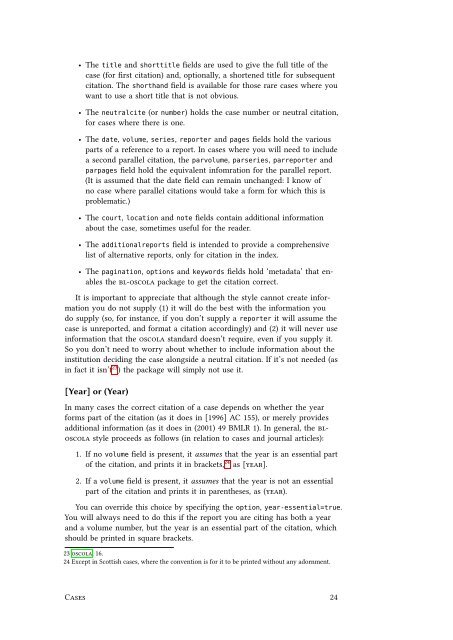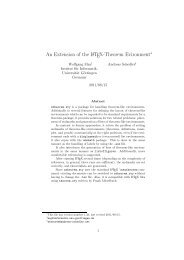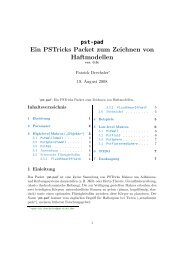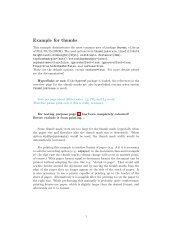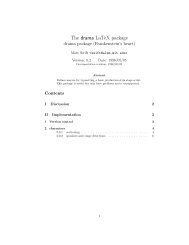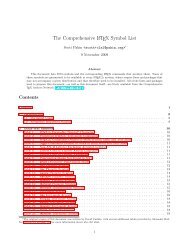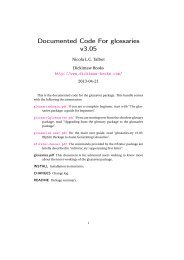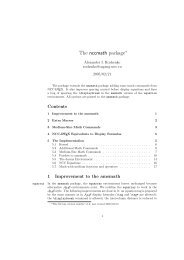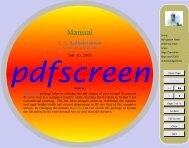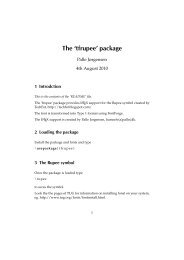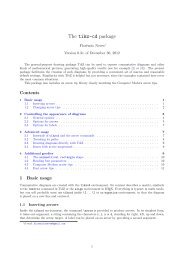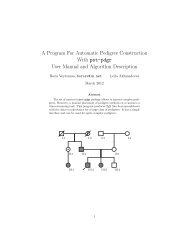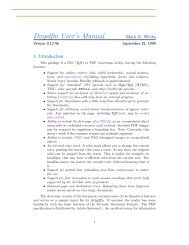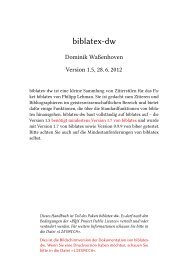oscola.pdf. - Mirrors.med.harvard.edu
oscola.pdf. - Mirrors.med.harvard.edu
oscola.pdf. - Mirrors.med.harvard.edu
You also want an ePaper? Increase the reach of your titles
YUMPU automatically turns print PDFs into web optimized ePapers that Google loves.
• The title and shorttitle fields are used to give the full title of the<br />
case (for first citation) and, optionally, a shortened title for subsequent<br />
citation. The shorthand field is available for those rare cases where you<br />
want to use a short title that is not obvious.<br />
• The neutralcite (or number) holds the case number or neutral citation,<br />
for cases where there is one.<br />
• The date, volume, series, reporter and pages fields hold the various<br />
parts of a reference to a report. In cases where you will need to include<br />
a second parallel citation, the parvolume, parseries, parreporter and<br />
parpages field hold the equivalent infomration for the parallel report.<br />
(It is assu<strong>med</strong> that the date field can remain unchanged: I know of<br />
no case where parallel citations would take a form for which this is<br />
problematic.)<br />
• The court, location and note fields contain additional information<br />
about the case, sometimes useful for the reader.<br />
• The additionalreports field is intended to provide a comprehensive<br />
list of alternative reports, only for citation in the index.<br />
• The pagination, options and keywords fields hold ‘metadata’ that enables<br />
the bl-<strong>oscola</strong> package to get the citation correct.<br />
It is important to appreciate that although the style cannot create information<br />
you do not supply (1) it will do the best with the information you<br />
do supply (so, for instance, if you don’t supply a reporter it will assume the<br />
case is unreported, and format a citation accordingly) and (2) it will never use<br />
information that the <strong>oscola</strong> standard doesn’t require, even if you supply it.<br />
So you don’t need to worry about whether to include information about the<br />
institution deciding the case alongside a neutral citation. If it’s not needed (as<br />
in fact it isn’t 23 ) the package will simply not use it.<br />
[Year] or (Year)<br />
In many cases the correct citation of a case depends on whether the year<br />
forms part of the citation (as it does in [1996] AC 155), or merely provides<br />
additional information (as it does in (2001) 49 BMLR 1). In general, the bl<strong>oscola</strong><br />
style proceeds as follows (in relation to cases and journal articles):<br />
1. If no volume field is present, it assumes that the year is an essential part<br />
of the citation, and prints it in brackets, 24 as [year].<br />
2. If a volume field is present, it assumes that the year is not an essential<br />
part of the citation and prints it in parentheses, as (year).<br />
You can override this choice by specifying the option, year-essential=true.<br />
You will always need to do this if the report you are citing has both a year<br />
and a volume number, but the year is an essential part of the citation, which<br />
should be printed in square brackets.<br />
23 <strong>oscola</strong>, 16.<br />
24 Except in Scottish cases, where the convention is for it to be printed without any adornment.<br />
Cases 24


